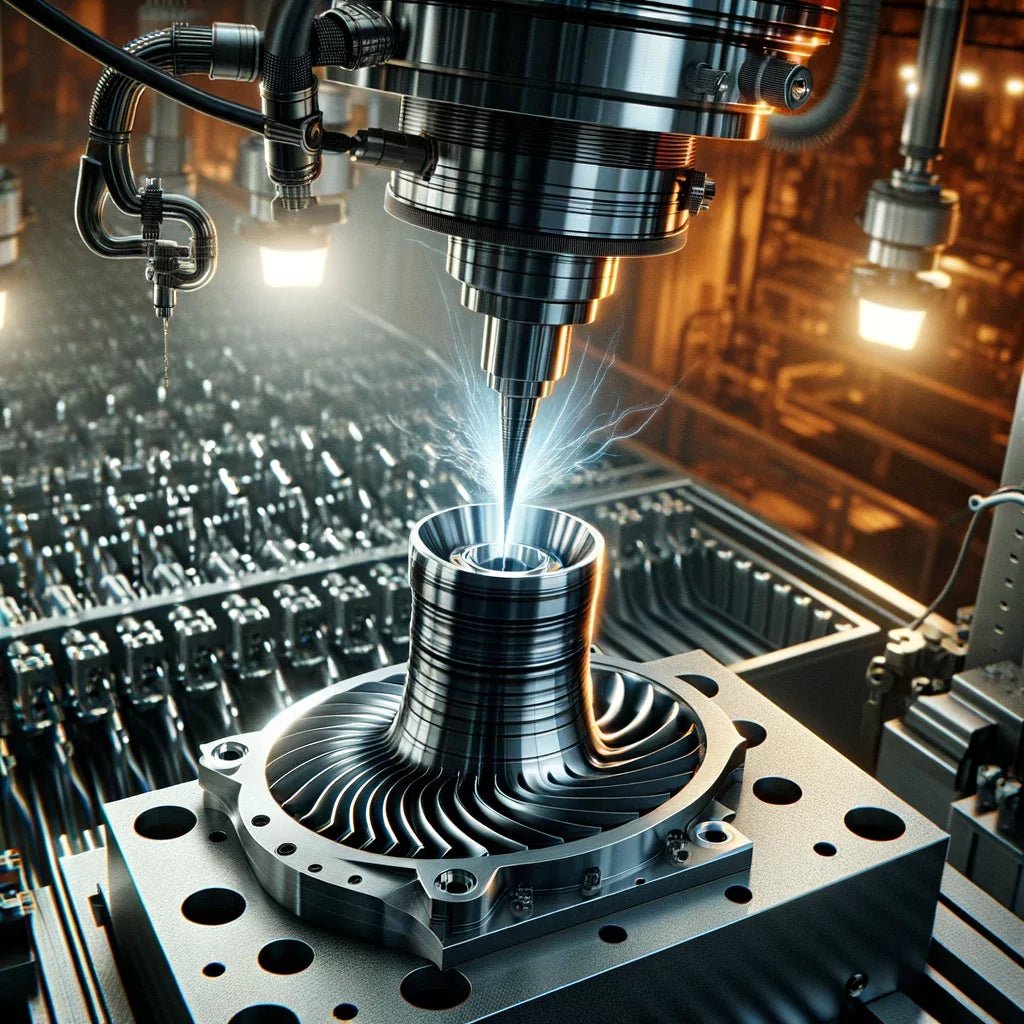Welcome to the World of Electric Discharge Machining: An Overview
Electric Discharge Machining (EDM) is a non-traditional machining process that uses electrical sparks to shape materials. Unlike traditional cutting methods, EDM doesn't involve direct contact between the tool and the workpiece. Instead, it erodes the material through rapidly recurring electrical discharges between the electrode (the tool) and the workpiece, both submerged in a dielectric fluid. The EDM process begins with an electrode and a workpiece, both connected to a power supply. The electrode is brought close to the workpiece, and when the voltage between the two becomes high enough, an electrical discharge occurs. This discharge vaporizes a tiny piece of the material, allowing for precision machining. Electric discharge machining is particularly valuable in industries where precision and material integrity are paramount. For example, in aerospace and automotive industries, EDM is used to create intricate components like turbine blades, injection molds, and small, complex parts.
EDM in the Aerospace and Automotive Industries: Precision in Engine Blade Manufacturing
In the aerospace and automotive industries, the manufacture of engine blades is a task that demands the utmost precision. These blades are critical components of engines, dictating efficiency and safety. EDM's ability to handle tough materials and intricate designs makes it an ideal process for shaping these blades. Engine blades are typically made from superalloys, materials known for their strength and resistance to extreme environments. EDM's ability to cut through these hard materials precisely, without inducing additional stress or structural changes, is invaluable. In both aerospace and automotive industries, even the slightest deviation in blade shape or size can have significant consequences. EDM provides the level of precision needed to ensure that each blade meets stringent specifications.
A Look Inside: The Workstation of an EDM Operator
The effectiveness of EDM is also a testament to the well-organized workstations where operators ply their craft. These workstations are equipped with sophisticated EDM machines, precision measuring instruments, and safety equipment. Everything in an EDM operator's environment is designed for efficiency, precision, and safety. Central to the workstation is the EDM machine itself, which can be either a wire EDM or a die-sinking EDM machine. This machine is equipped with advanced computer control systems that allow operators to program the precise paths and parameters needed for machining. Precision is key in EDM. Instruments like micrometers and calipers are standard, ensuring that each cut meets the exact specifications. Securely holding the material is crucial. The workstation includes vices or fixtures designed to hold various shapes and sizes of workpieces during the machining process. Safety is paramount in an EDM setting. The workstation is outfitted with emergency stop buttons, fire extinguishers, and personal protective equipment (PPE) like gloves and safety glasses. Ergonomic considerations are also made to ensure the operator’s comfort during long machining processes.
Organizational Mastery: Handling Multiple Components in EDM
Efficiency in EDM extends to how multiple components, such as engine blades, are managed. Workstations are designed for compartmentalization and workflow, with each blade stored and processed through meticulous stages - from machining to inspection. This system ensures each piece is handled with the care it deserves. To manage multiple blades simultaneously, the workstation features dedicated areas for different stages: from machining to inspection. Each blade is stored in clearly labeled compartments, organized by serial number. After machining, each blade undergoes a thorough inspection. The workstation includes specialized benches equipped with precision measuring tools to ensure each blade meets the stringent requirements for aerospace and automotive applications.
Beyond EDM: Exploring Similar Machining Processes
While unique, EDM shares the stage with other advanced machining processes like laser cutting, water jet cutting, ultrasonic machining, and electrochemical machining. Each of these processes brings its own strengths to the table, particularly in handling hard materials and achieving precise results. Laser cutting uses high-powered lasers for precision cutting, while water jet cutting employs high-pressure water streams. Both methods, like EDM, are contactless and can handle complex shapes. Ultrasonic Machining (USM) uses high-frequency vibrations in an abrasive slurry to erode materials, while Electrochemical Machining (ECM) removes material through electrochemical reactions. Both are alternatives for working with hard-to-machine materials.
Enhancing EDM Workstations: The Role of Plastic Dividable Grid Containers
A key to the success of EDM workstations is the use of plastic dividable grid containers. These containers offer customizable storage, enhancing the workflow and ensuring safety. They are particularly adept at storing and protecting delicate components, further streamlining the EDM process. These containers can be customized to fit various part sizes, making them ideal for storing different engine blades. Their ability to be divided into small compartments ensures each item is securely stored, reducing the risk of damage. With clear labeling areas, dividable grid containers aid in maintaining an organized workflow. Their compatibility with handling equipment and durability make grid containers an excellent choice for the industrial environment of EDM.
The Spark-Filled Realm of Electric Discharge Machining
Through this comprehensive look, it's clear that EDM is more than just a manufacturing process - it's a confluence of precision, innovation, and organizational efficiency. It stands as a testament to how technology can reshape the boundaries of manufacturing and design.
Read our other blog posts that discuss containers for manufacturing and automation processes:
- Grid Containers for Fabrication (Component Segregation)
- Automation Totes: Optimizing Material Handling in Automated Applications
- PCB Storage & Handling in Electronics Manufacturing
- Material Handling: What it is & Why it Matters
- Importance of ESD Safe Bins in Electronics Manufacturing
- Manufacturing and Assembly: Importance of Plastic Parts Bins
- EMS Storage & Handling

